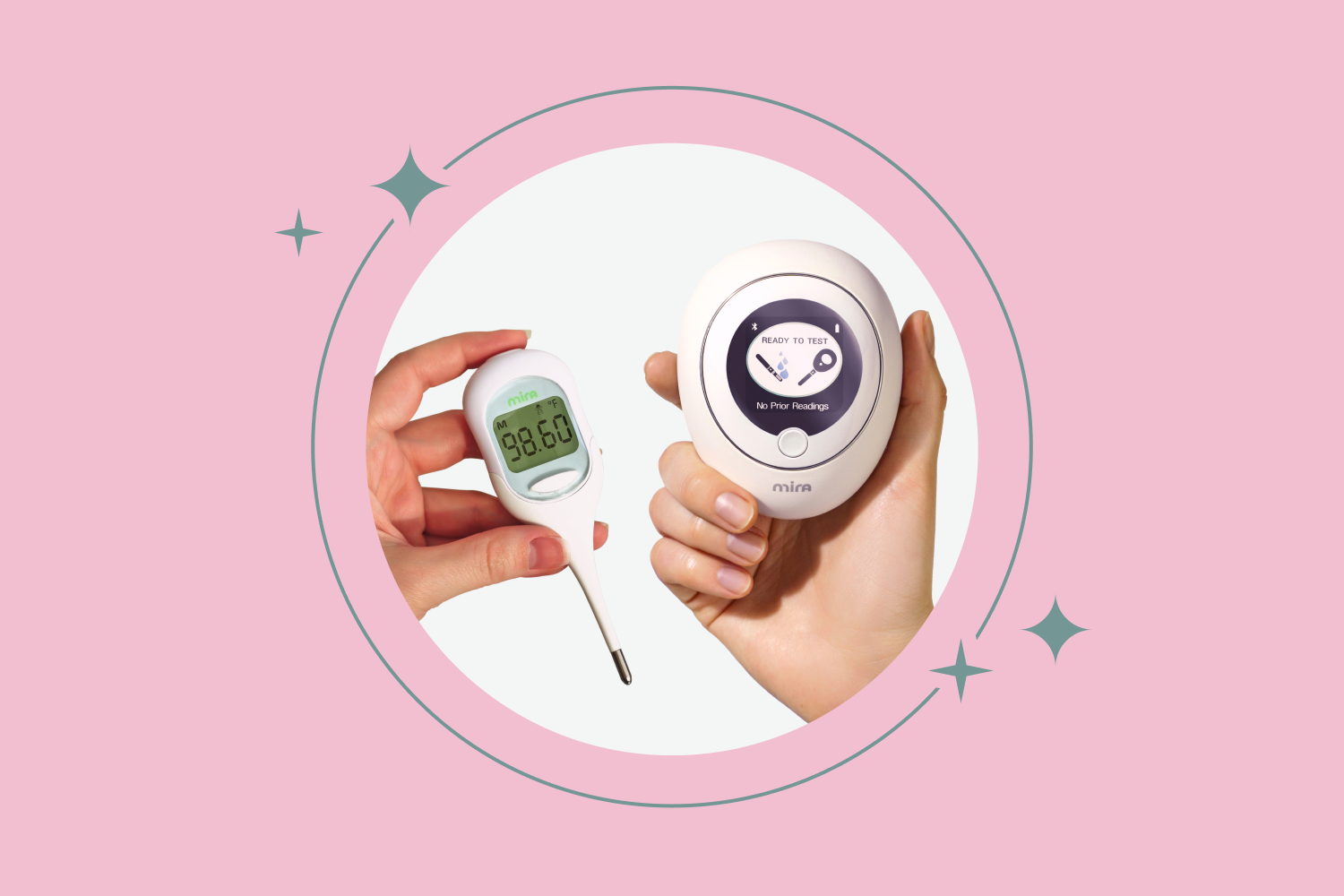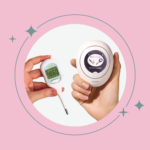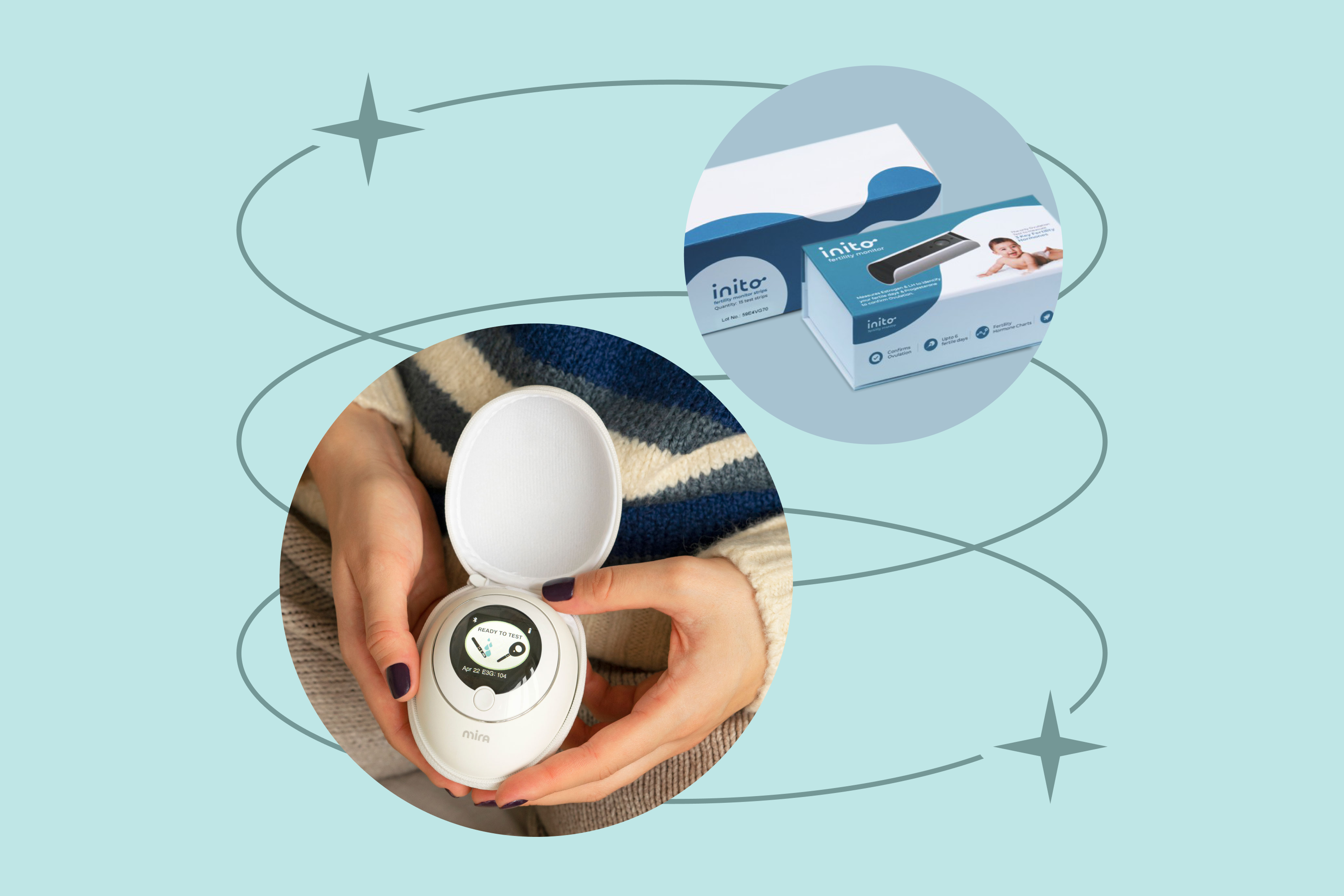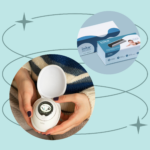Clearblue vs First Response: What’s Best for Your TTC Goals?
The options can be overwhelming when it comes to home pregnancy testing. While every device claims to answer the question of whether you are pregnant or not, there can be big differences in how they work. From the length of time it takes to get a result to how you actually use the test – not all tests are created equal.

We compared two popular options, Clearblue vs First Response, to see who would win when it comes to reliability, features, and usability. We can’t take the test for you, but we can help you understand which of these options might be best for you, and give you some alternatives.
Clearblue vs First Response
Clearblue
Clearblue pregnancy tests have been in the home pregnancy testing game a long time. The brand has been popular with those trying-to-conceive (TTC) and innovative testing initiatives like clear displays and easy to read results (they even offer a digital option) shore up their popularity.
They offer a variety of options from digital readouts and rapid tests to tests designed for early detection. Despite their popularity, their reliability is sometimes called into question and online reviews often report more false positives than other tests.
First Response
Another heavy hitter in the pregnancy test market, First Response is a popular choice amongst couples TTC. Backed by the largest study of over-the-counter pregnancy tests to date, First Response is 97 % accurate from the day of your missed period which makes it easy to see why so many women choose this test.
Features face to face
The majority of pregnancy tests work by detecting and measuring a pregnancy hormone in your urine called human chorionic gonadotropin, or hCG. This hormone is only produced in elevated levels once an egg has been fertilized and implanted in the uterine wall. Once this happens (usually 6-12 days past ovulation) and hCG levels start to rise you should get a positive result on a pregnancy test.
Of course taking the test at the right time is critical to trusting those results, not to mention faith in which test you use. Many types of tests are available but when comparing Clearblue or First Response there are few key features to consider.
Digital display
No matter what outcome you’re hoping for, emotions can run high when anticipating a pregnancy and you don’t want any confusion with the results. While we’re all familiar with the pee-on-a-stick variety of tests and how they generally work, reading the results can sometimes be confusing.
Both Clearblue and First Response offer tests with digital displays but they work slightly differently. Clearblue offers tests with digital readouts and displays to help ease the tension that can come with difficult-to-read results. These tests have a digital display that counts down to the results and then tells you in words or symbols if you are pregnant or not. Even though this option is more expensive, it takes the confusion out of home testing and is an excellent option when you need to know with 100% clarity.
First Response also offers a digital option that simply says “yes” or “no” to indicate whether you are pregnant or not. Most First Response tests will require you to interpret the test lines.
App availability
While Clearblue and First Response both offer apps designed to compliment your fertility journey (like period trackers or due date calculators), they do differ in their testing apps. Clearblue offers an app designed to work with its ovulation testing system, though there is little in the way of support or connectivity for their pregnancy tests.
First Response offers a companion app, EasyRead, that allows you to interpret and confirm the results. The app allows you to scan your test to convert the lines into the words “pregnant” or “not pregnant” in the same way a digital display would.
Hormone tracking
Although both Clearblue and First Response measure the hormone hCG to test for pregnancy, neither test is capable of true hormone tracking. The tests are meant to detect levels of hCG that would be present during early pregnancy and work on a threshold basis rather than a quantitative measurement. They only detect hCG and are not meant to detect any other hormones. To track hormone levels you would need a tracking tool like Mira that captures more than just threshold levels and gives a true measurement over time.
Fertility tracking
While home pregnancy tests may allow for early pregnancy detection, they offer little in terms of fertility tracking (see our guide on Daysy vs Lady Comp). There are tests on the market, similar to home pregnancy tests, known as OPKs to help predict ovulation but they don’t give exact levels and don’t work well for people whose hormone levels differ from what is considered the norm. Both the Clearblue and First Response home pregnancy tests only detect hCG and work on a threshold basis rather than quantitative fertility tracking.
Ovulation tracking
Although it might be tempting to use a home pregnancy test to track ovulation since hormones are involved, it wouldn’t be effective. Pregnancy tests only detect hCG and are meant to answer the question of whether you are pregnant or not. Ovulation tracking involves measuring the hormones that indicate ovulation, like the surge in luteinizing hormone (LH) that happens just before ovulation. Taking these tests offers no data or insights on any other hormones and are not helpful or necessary to detect ovulation.
Stand out features
- Rapid detection: While most pregnancy tests can take several minutes to both administer and wait for the results, Clearblue offers a test that allows for rapid detection. The test delivers results in just under 1 minute rather than the 3 minutes most tests need.
- Early detection: Thanks to its sensitive technology, First Response offers a pregnancy test that can detect pregnancy as early as 6 days before a missed period. It is one of the most sensitive tests on the market and is a favourite among the TTC community.
Clearblue vs First Response: which is right for you?
Use Clearblue if:
- You want a digital display that tells you how far along you are.
- You need an accurate result quickly.
- You want the reassurance of a countdown indicator and light to tell you the test is working and when it’s ready.
- You want to show the results to someone else after test day (results remain on the display for up to six months, unlike other brands).
Use First Response if:
- You want to test sooner than your missed period is due.
- You want to use a test that is highly trusted and championed in the online TTC community.
- You want good value for your money since you may be using multiple tests.
What about other options?
Pregnancy testing at home can be as overwhelming as it is exciting with so many options available. Home tests can certainly confirm your results, but offer little insight into how you got that result. When you are trying to conceive, it can be helpful to track your hormones over the course of your cycle so you can not only know when your most fertile days are, but make informed decisions about your fertility.

Mira Fertility Plus is an at-home, non-invasive solution which helps you naturally track your hormone levels. It tracks both luteinizing hormone (LH) and estrogen (with plans to expand) with an AI-powered smart tracker and app, to quickly learn your cycle and make accurate predictions about your fertility.
Mira’s Editorial Process
All content produced by Mira meets stringent editorial standards, ensuring excellence and accuracy in language and medical precision. Every piece undergoes thorough fact-checking and review by qualified professionals. Check out our full editorial process to learn more.










